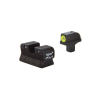Opinion
On October 18, 2024, David Kopel delivered an insightful lecture on the history of machine guns during the Firearms Research Center’s (FRC) symposium on the National Firearms Act (NFA) of 1934. His presentation, part of a broader discussion on the historical and legal relationship between the NFA and the Second Amendment, explored the technological advancements, legal classifications, and societal impacts of machine guns over time.
From Manual to Automatic: The Journey of Innovation
Kopel began his lecture by introducing the concept of “manual machine guns,” a term he uses to describe early rapid-firing firearms like the Gatling Gun. Patented in 1862, the Gatling Gun represented a groundbreaking step in firearms technology, featuring multiple rotating barrels to mitigate overheating and achieve continuous fire with a hand crank. This innovation set the stage for the development of true automatic firearms, where a single trigger press initiates continuous fire.
The transition to automatic technology came with Hiram Maxim’s invention in 1884. By harnessing the recoil energy from firing a cartridge, Maxim’s design automated the reloading and firing process, eliminating the need for manual cranking. This advancement led to lighter, more efficient firearms like the Vickers gun, which became a staple for militaries worldwide.

Machine Guns NFA & Legal Classifications
Kopel delved into the legal definitions established by the NFA of 1934, which restricted automatic firearms and components like suppressors and short-barreled rifles. He highlighted how the NFA’s definition of a machine gun—a firearm capable of firing continuously with a single trigger pull—has shaped legal interpretations and enforcement.
One intriguing point was the fixed supply of automatic firearms available to civilians, created by the Firearms Owners’ Protection Act of 1986. This law prohibited the registration of newly manufactured automatic firearms for civilian use, drastically increasing the value of pre-1986 registered machine guns.
Misconceptions & Terminology
David Kopel tackled widespread misconceptions surrounding firearms terminology, a critical topic for anyone discussing gun laws and policy. He particularly focused on the misuse of terms like “automatic,” “semi-automatic,” and “assault rifle,” explaining how these inaccuracies fuel confusion in public debates and legislation.
Kopel underscored the importance of distinguishing between fully automatic firearms, which fire continuously as long as the trigger is held down, and semi-automatic firearms, which fire one round per trigger pull and require a separate trigger action for each shot. While this difference is straightforward for firearms enthusiasts, it is often misunderstood by the general public and misrepresented in political discourse.

One example Kopel provided was the Colt 1911 pistol, a classic semi-automatic firearm designed by John Browning in 1911 and still widely used today.
Despite its semi-automatic nature, the pistol has often been referred to colloquially as the “Colt Automatic,” a misnomer that persists due to historical naming conventions. Kopel warned that such terms, when taken out of context, can lead to the erroneous belief that semi-automatic firearms function like military-grade automatic weapons.
He also addressed the politically charged term “assault rifle” and its cousin, “assault weapon.” While “assault rifle” has a specific military definition—referring to fully automatic or selective-fire rifles such as the AK-47 or M16—the term “assault weapon” is a modern invention, often used in legislation to describe semi-automatic firearms based on cosmetic features. Kopel noted that these cosmetic features, such as a pistol grip or adjustable stock, have no bearing on the firearm’s functionality.
Kopel highlighted legislative examples to illustrate the confusion and potential for misuse. He cited laws that have attempted to categorize firearms with arbitrary definitions, such as banning guns with certain cosmetic features while ignoring their mechanical operation. For instance, he mentioned that some laws have gone so far as to propose bans on paintball guns or BB guns under the guise of regulating “assault weapons.”
To drive the point home, Kopel paraphrased Mark Twain: “Just because you call a dog a cow doesn’t make it a cow.” Similarly, labeling a semi-automatic firearm as an “assault rifle” doesn’t transform it into one. Kopel emphasized the need for precise, informed terminology, especially in policy-making and media coverage, to avoid misleading the public and perpetuating myths.
By clarifying these distinctions, Kopel provided a strong foundation for understanding the real capabilities and limitations of different firearms, urging listeners to look beyond emotionally charged rhetoric and focus on factual, technical definitions.
Live Inventory Price Checker

|
Trijicon HD Front/Rear Night Sight Set for Colt 1911 Pistol - 600514 | Palmetto State Armory | $ 146.99 $ 127.99 |
|

|
Pearce Grip Modular Grip for Colt 1911 Government Pistols, Black - PMG-1911 | Palmetto State Armory | $ 21.99 $ 16.29 |
|

|
Colt 1911 El Compadre .38 Super 5" 9rd Pistol, Engraved, Limited Edition, Only 500 Made - O1911C-38-ECB | Palmetto State Armory | $ 1911.00 |
|
|
|
Colt 1911 Competition Series 70 45 ACP 8+1 Round Semi Auto Hammer Fired Pistol, Stainless - O1070CCS | Palmetto State Armory | $ 1099.99 $ 949.99 |
|
The Militarization of Law Enforcement
One of the more surprising revelations in Kopel’s lecture was the significant growth in the number of registered machine guns in the United States since 1986, particularly among law enforcement agencies.
He noted that while there were fewer than 100,000 registered machine guns in 1986, today that number exceeds 700,000—highlighting the ongoing militarization of law enforcement.
Practical Applications & Resources
For legal practitioners handling NFA cases, Kopel offered practical guidance on navigating the complexities of federal firearms law. He recommended resources like the ATF’s National Firearms Act Handbook and Stephen Halbrook’s Firearms Law Deskbook as invaluable tools for understanding regulatory nuances.
Machine Guns
Kopel’s lecture was a masterclass in the history and evolution of machine guns. By focusing on the technological and legal milestones, he provided a clear, factual narrative free from political bias. Whether you’re a history buff, a legal scholar, or a firearms enthusiast, Kopel’s exploration of machine guns offers a compelling look at the intersection of innovation, law, and society.
To dive deeper into this fascinating topic, watch the full lecture above or on the Firearms Research Center’s website.
Support the Firearms Research Center
The Firearms Research Center at the University of Wyoming is a privately funded entity committed to advancing research and scholarship in firearms law, history, and policy. Relying on contributions from supporters, the center fosters informed dialogue and understanding on important firearms-related issues.
If you appreciate independent research and insightful analysis, please consider making a donation. Your support helps sustain their efforts and contributes to ongoing education and exploration in the field.
Donate to the Firearms Research Center





L.E. should have no special firearm privileges.
My suggestion… stay away from YouTube.. you’re going to see an alarming amount of DEI hires with guns that never should have one in the first place.
The first machine gun was used by Franco Nero in ‘Django’ (1966)!!!!!!!… He dragged it along behind him, in a coffin.
That was a great Spaghetti Western.
When the Marines ran into these revolutionary new weapons at Belleau Wood, a single German machine gun team killed thousands of them! And a few miles away, when the British Army faced these machine gun teams at the river Somme, they were killed by the hundreds of thousands!